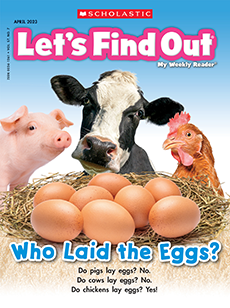¡Vamos, semillas! Lesson Plan

Materials: Parts of a Seed skill sheet, large bean seeds (such as pinto, kidney, or lima beans)
- In advance, gather some bean seeds. The varieties listed above will work well. Soak them in water for 12-24 hours.
- Give each child a seed and a copy of the skill sheet. They can rub their fingers on the bean to see the seed coat come off, and then split the bean down the middle to see what’s inside.
- Using the diagram as a guide, have children look for those parts inside their seed. If they find one, have them draw it on the bottom of the sheet. They can add labels, using the diagram for reference.
- Let kids know that they don’t have to find every part, and that their seed might look a little bit different from the diagram. When they have finished, let kids share their findings!
Academic Standards
Reading Objective:
Children will sequence the steps in the dandelion life cycle.
Science Focus:
seeds and plants, plant life cycles
Page 4 Skill:
nonstandard measurement
Vocabulary:
diente de león, flores, hojas, plántula, semillas
CCSS:
RI.K.1, RI.K.3, RF.K.3.C, SL.K.2
- Watch our video ¡Semillas en camino! Afterward, ask, “¿Qué necesitan las semillas para convertirse en plantas?”
- As you read about the dandelion life cycle, have kids follow along by pointing to the parts of the plant you are reading about in their magazines.
- After reading, get up and move like a growing plant with our ¡BAILA BAILA! video.
- Then use the Demuestra lo que sabes skill sheet to gauge comprehension.
- Children can pick a bouquet while practicing sight words with our game Flores con
- palabras frecuentes.
- Children learn what grows from a seed and what doesn’t with our ¿Qué crecerá skill sheet.

Materials: ¿Qué hay en la semilla? skill sheet, large bean seeds (such as pinto, kidney, or lima beans)
- In advance, gather some bean seeds. The varieties listed above will work well. Soak them in water for 12-24 hours.
- Give each child a seed and a copy of the skill sheet. They can rub their fingers on the bean to see the seed coat come off, and then split the bean down the middle to see what’s inside.
- Using the diagram as a guide, have children look for those parts inside their seed. If they find one, have them draw it on the bottom of the sheet. They can add labels, using the diagram for reference.
- Let kids know that they don’t have to find every part, and that their seed might look a little bit different from the diagram. When they have finished, let kids share their findings!
